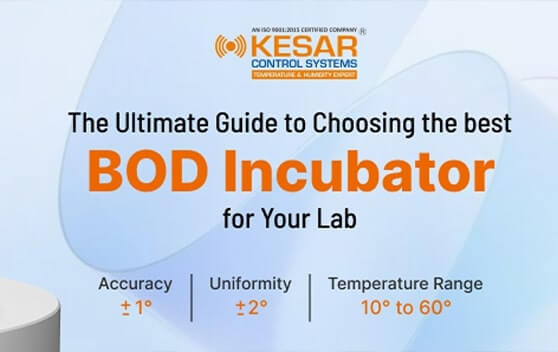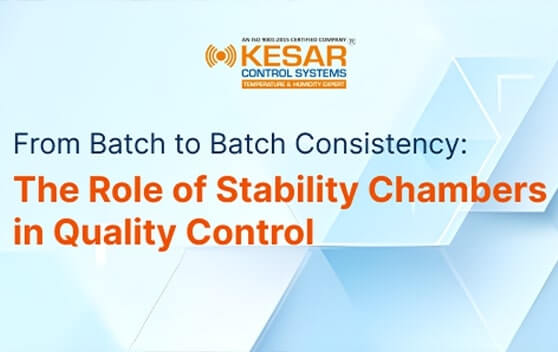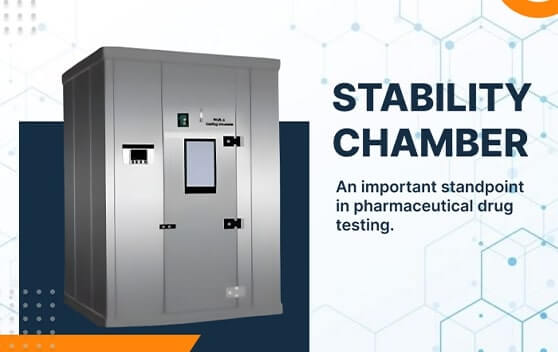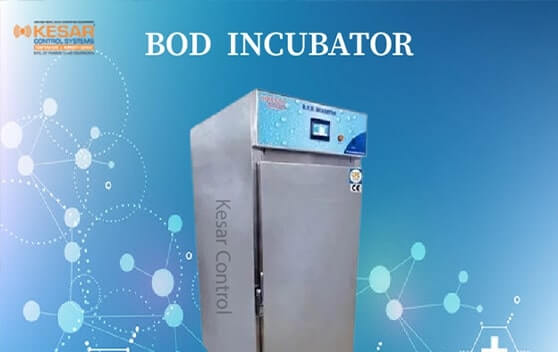How to Choose the Perfect Stability Chamber
In product development and quality assurance, stability chambers are crucial. These chambers create specific environmental conditions to test product stability and shelf life. Selecting the right stability chamber is vital for accurate and reliable results, affects product quality and regulatory compliance. This guide will help you choose the perfect stability chamber for your needs.
Why Stability Chambers Matter
What is a Stability Chamber?
A stability chamber is a controlled environment that tests how different conditions affect products. These chambers are essential for industries needing precise and consistent conditions to ensure product stability and safety over time. They simulate factors like temperature, humidity, and light, enabling thorough testing and validation of products under various conditions.
Definition and Role
Stability chambers simulate environmental conditions like temperature, humidity, and light to test product durability and longevity. They help manufacturers predict shelf life and performance, ensuring products meet regulatory standards and consumer expectations. Stability chambers enable consistent and repeatable testing by maintaining precise conditions, which is crucial for product development and quality control.
Importance Across Industries
Stability chambers are essential in various industries. In pharmaceuticals, they ensure drug efficacy and safety over time. In the food industry, they test preservatives and packaging to keep food safe and tasty. Cosmetics makers use them to maintain product quality and safety. In electronics, stability chambers test components for durability and performance under different conditions, ensuring reliability and safety for users.
Understanding Stability Chambers
Key Functions and Applications
Stability testing involves monitoring a drug's quality over time under controlled environmental conditions, such as temperature and humidity. This process helps in predicting the product's shelf life and effectiveness.
Types of Stability Tests
-
Shelf-Life Testing: Determines how long a product remains effective and safe under specified storage conditions. This involves testing the product at different time intervals to assess changes in its physical, chemical, and microbiological properties.
-
Photostability Testing: Assesses the impact of light on product stability. This type of testing is particularly important for products that are sensitive to light, such as pharmaceuticals and cosmetics, ensuring that they do not degrade when exposed to light over time.
-
Packaging Stability Testing: Evaluates how packaging materials protect the product under different environmental conditions. This ensures that the packaging effectively preserves the product's quality and extends its shelf-life by preventing contamination and degradation.
Choosing the Right Stability Chamber
Assessing Your Needs
Before choosing a stability chamber, it's vital to evaluate your needs. Consider factors like the products you'll test, the necessary environmental conditions, and the testing volume. Understanding these requirements will help you select a stability chamber that suits your needs, delivering reliable and precise results.
Product Requirements
Identify the products you'll test and their stability needs. Different products may require specific environmental conditions and testing methods. For instance, pharmaceuticals may need precise temperature and humidity control, while electronics may require testing under extreme temperature changes. Knowing these requirements will guide you in choosing a chamber with suitable specifications.
Sensitivity and Capacity
Assess your products' sensitivity to environmental changes and the stability chamber's capacity. Make sure the chamber can handle the volume of products you'll test. If it's too small, it might not meet your needs; if it's too large, it could be inefficient and costly. Consider the chamber's internal size and how many samples you must test simultaneously.
Temperature and Humidity Ranges
Review the temperature and humidity ranges the chamber can reach. Ensure they align with your stability test requirements. Certain products may need testing at extreme temperatures or specific humidity levels. Verify that the chamber can maintain these conditions accurately and consistently throughout the testing duration.
Researching and Choosing Manufacturers
Reputation and Reviews
Research potential manufacturers by reviewing their reputation and customer feedback. Look for companies with a history of producing reliable and high-quality stability chambers. Customer reviews and testimonials can provide valuable insights into the performance and reliability of the manufacturer's products. Additionally, check if the manufacturer has received any industry awards or certifications that attest to the quality of their products.
Company Background
Consider the manufacturer's background, including their experience and expertise in the industry. A well-established company is more likely to provide robust and dependable equipment. Look for manufacturers with a proven track record of innovation and quality in stability chamber design and production. Understanding the company's history and expertise, along with the client's feedback, can help you gauge its ability to meet your needs.
Customer Feedback
Read customer reviews and testimonials to gain insights into the performance and reliability of the manufacturer's products. Positive feedback from other users can be a good indicator of quality. Pay attention to comments about the chamber's performance, durability, and the manufacturer's customer service. This information can help you make an informed decision and choose a manufacturer that provides reliable products and excellent customer support.
Support Services
Ensure the manufacturer offers comprehensive support services, including installation, maintenance, and repair. Good after-sales support is essential for the long-term performance of your stability chamber. Check if the manufacturer provides training for your staff, regular maintenance services, and quick response times for repairs. Reliable support services can minimize downtime and ensure that your stability chamber operates efficiently and effectively.
Cost and Budget
Initial and Ongoing Costs
When budgeting for a stability chamber, consider both the initial purchase price and ongoing maintenance costs. Factor in expenses such as calibration, repairs, and energy consumption. While the initial purchase price is a significant consideration, the total cost of ownership includes maintenance, energy usage, and potential repairs. A lower initial cost might be offset by higher ongoing expenses, so it's essential to consider the long-term financial implications.
Purchase Price and Maintenance
Compare the purchase prices of different models and manufacturers. Additionally, consider the maintenance requirements and costs associated with each option. Some chambers may have higher upfront costs but lower maintenance needs, while others might be cheaper initially but require more frequent servicing. Balancing these factors can help you choose a cost-effective solution that meets your needs.
Energy Efficiency
Choose a stability chamber that is energy efficient to reduce long-term operating costs. Energy-efficient models can also be more environmentally friendly. Consider the energy consumption of different models and opt for one that offers the best balance between performance and energy efficiency. This can help you save on operating costs and reduce your environmental footprint.
Technical Specifications and Features
Temperature Control
Look for a stability chamber with precise temperature control. The ability to maintain stable temperatures is crucial for accurate testing. Temperature fluctuations can affect the results of your stability tests, so it's essential to choose a chamber that can maintain consistent conditions. Check for features like programmable temperature settings and uniform temperature distribution within the chamber.
Precision and Stability
Ensure the chamber offers high precision and stability in maintaining the set environmental conditions. This is vital for obtaining reliable test results. Precision in controlling temperature, humidity, and light levels ensures that your tests are repeatable and accurate. Stability in these conditions over time is equally important to ensure that your products are tested under consistent environments.
Cooling and Heating Mechanisms
Examine the cooling and heating mechanisms of the chamber. Efficient systems will provide better control and faster recovery times. Look for chambers with advanced cooling and heating technologies that can quickly adjust to set conditions and maintain them consistently. Efficient systems also contribute to energy savings and reduced operating costs.
Construction and Build Quality
Materials Used
Check the materials used in the construction of the stability chamber. High-quality materials will ensure durability and longevity. interiors and exteriors, for example, are resistant to corrosion and easy to clean, making them ideal for stability chambers. Robust construction materials contribute to the chamber's ability to withstand rigorous testing conditions over time.
Durability and Longevity
Consider the overall build quality and durability of the chamber. A well-built chamber will have a longer lifespan and require fewer repairs. Look for features such as reinforced doors, sturdy shelves, and high-quality seals that prevent leaks and maintain consistent environmental conditions. Durability and longevity are key factors in ensuring that your investment provides reliable service over the long term.
Safety Features
Look for safety features such as alarms and alerts. These features can help prevent damage to your products and equipment. Safety features might include temperature and humidity alarms, door open alerts, and automatic shutdowns in case of system failures. These features help protect your products and ensure that testing conditions remain stable and controlled.
Alarms and Alerts
Make sure the chamber features a dependable alarm system to alert you of any deviations from set conditions. This helps prevent potential product damage. Audible and visible alarms are essential, along with detailed information about the deviation. This enables swift corrective action to preserve test integrity.
After-Sales Support and Service
After-sales support is vital for your stability chamber's long-term operation. Make sure the manufacturer offers comprehensive support, including regular maintenance, troubleshooting, and repair services. Good support ensures your chamber runs efficiently, minimizing downtime, and maximizing productivity.
Choosing the right stability chamber requires careful consideration of your needs, product requirements, and budget. Research manufacturers, assess technical specifications, and ensure reliable after-sales support to find a chamber that delivers accurate results. Investing in quality is crucial for maintaining product standards and meeting industry regulations.
In essence, the ideal stability chamber should match your product's environmental needs, provide precise control, and come from a reputable manufacturer with strong support. Evaluate your needs thoroughly, compare options, and consider long-term costs for consistent results and chamber longevity.
By following these steps, you can confidently select a stability chamber that enhances your product development and quality control, leading to greater efficiency in your operations.







